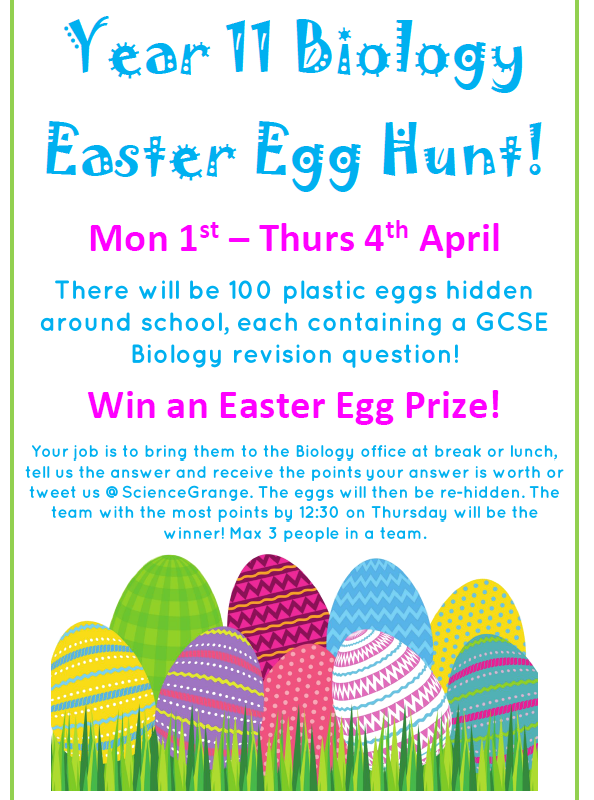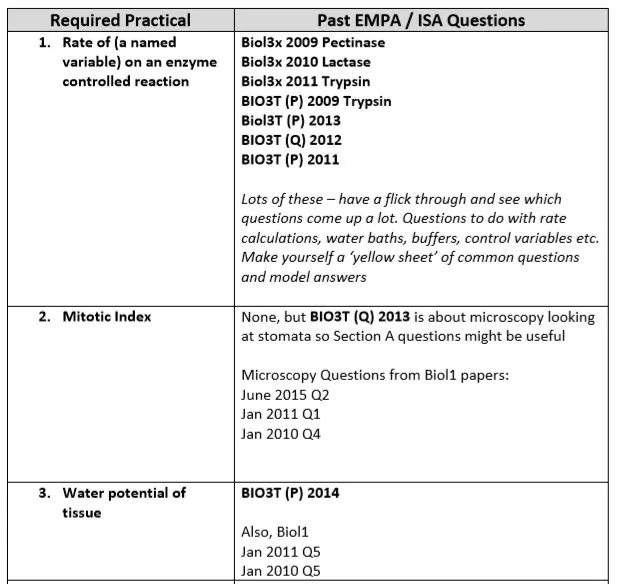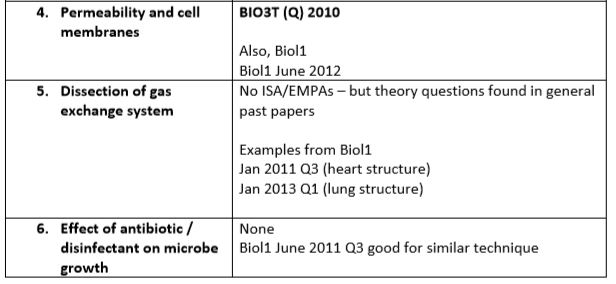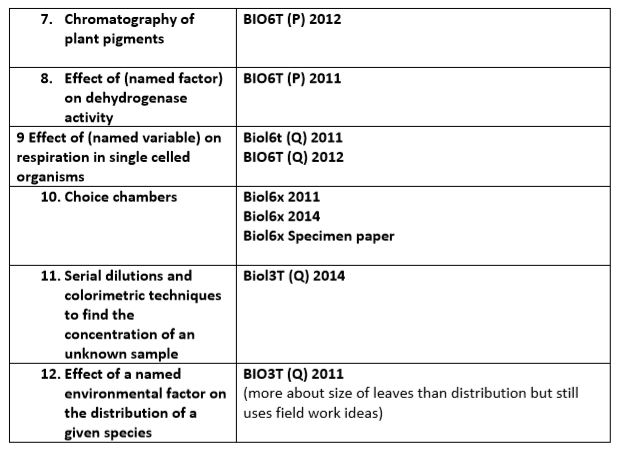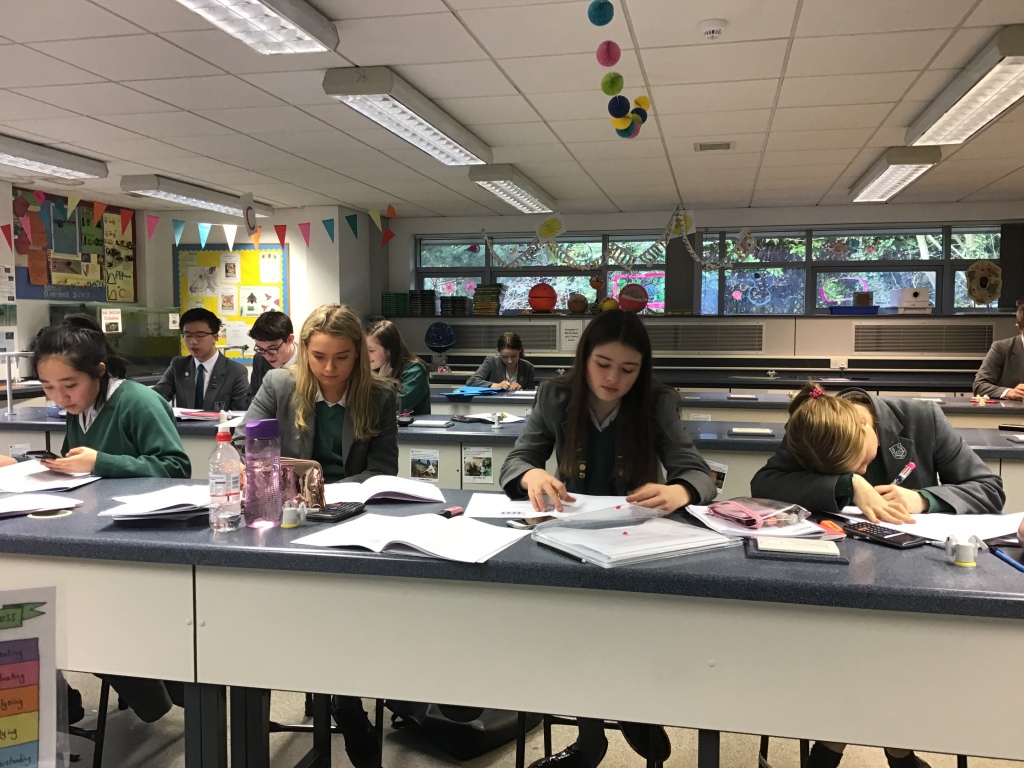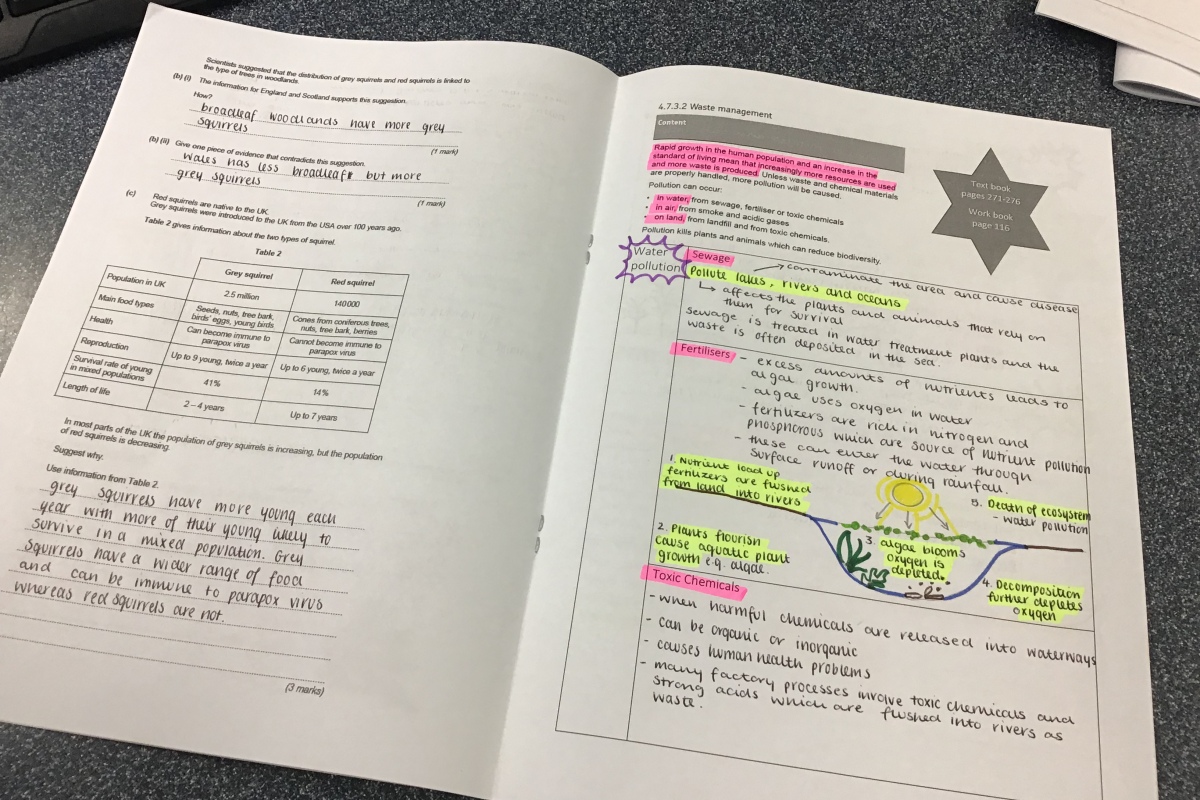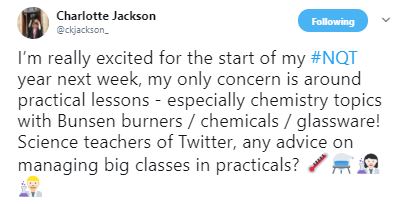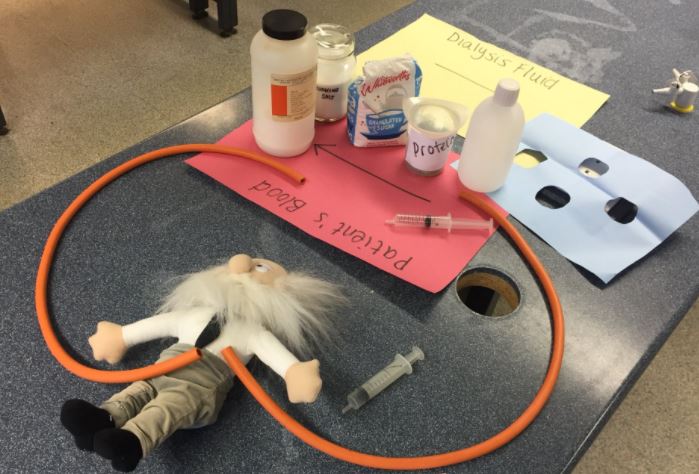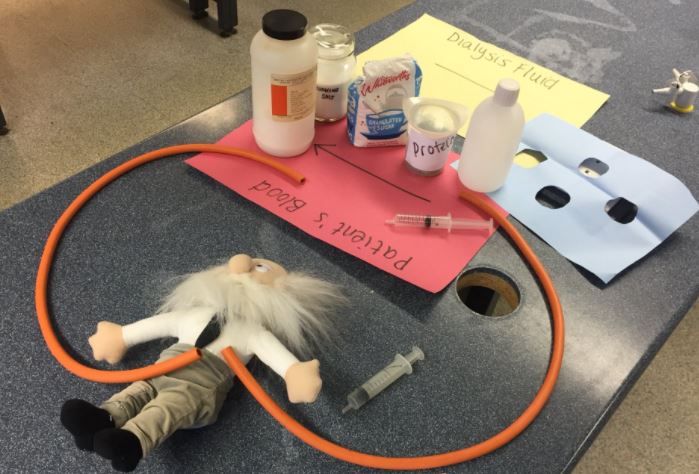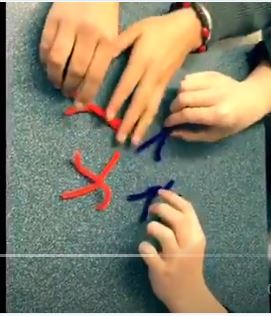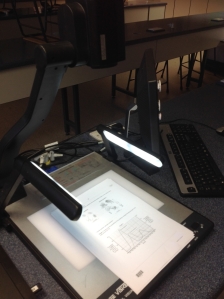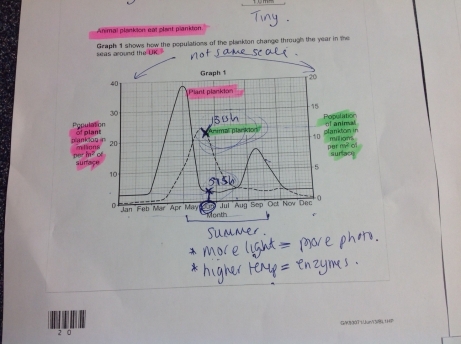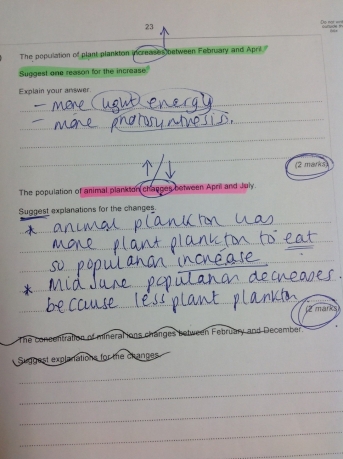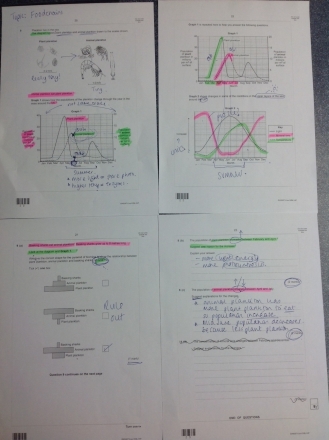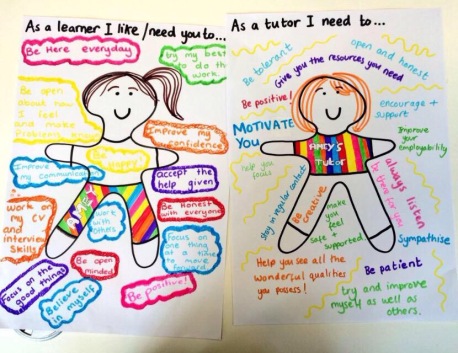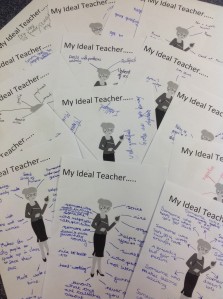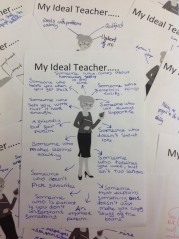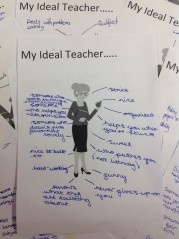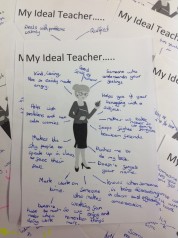I started using booklets a few years back and they seem to be getting pretty fashionable now, so I thought I’d share some of mine as examples and tell you why I love them!
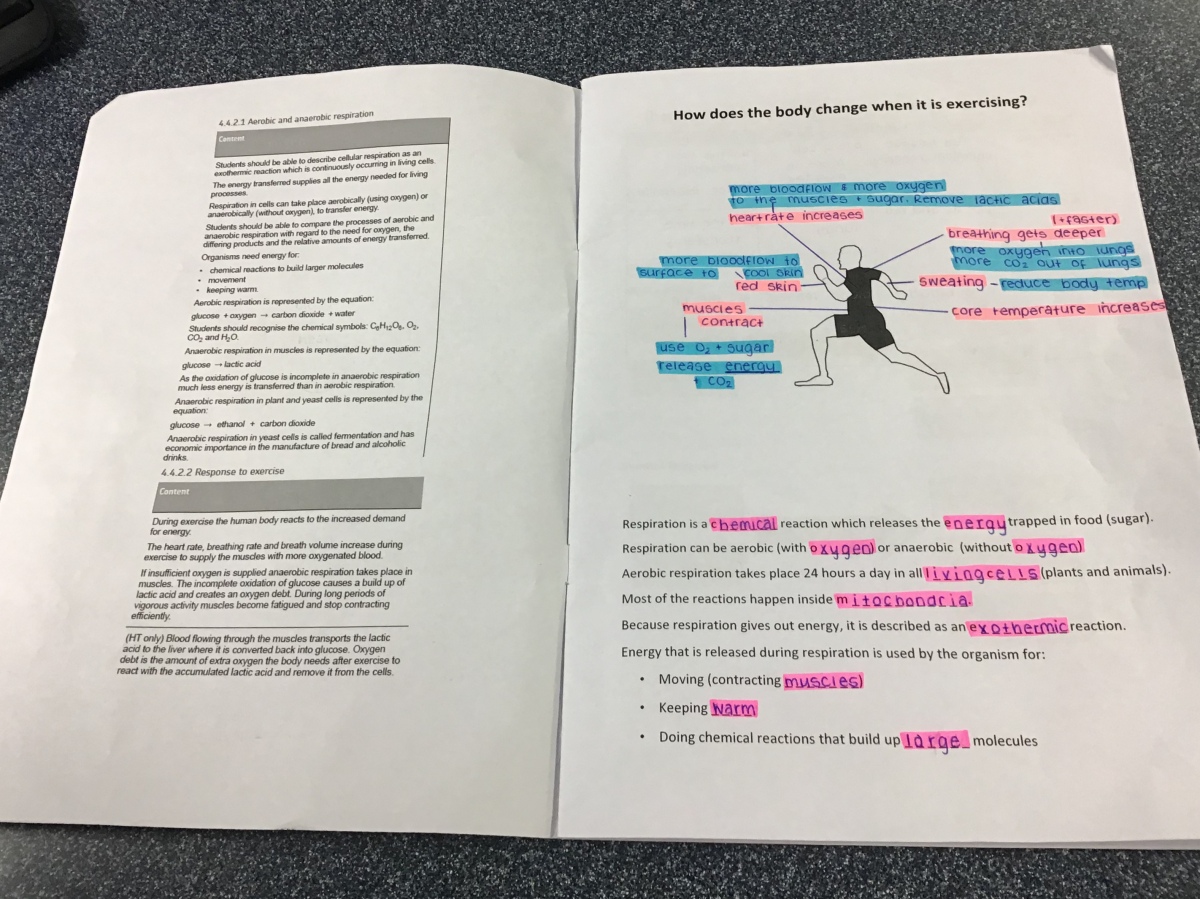
What is a booklet?
The booklets I make are an A4, saddlestitched booklet which covers one topic. They usually have a front cover with a catchy image which captivates students at the start of a new topic and summarises what that topic is about, the specification for that topic to use as a checklist, some bubbles for definitions, some fill-in-the-blank notes, blank summary tables, spaces for practical work, crosswords and other puzzles, some practice examination questions, and sometimes space for revision or feedback from a test. It’s basically a text book crossed with worksheets and practise questions all in one.
Why are booklets awesome?
With my Y8 and Y9 classes at my current school, they are only timetabled for biology either once or twice a week, so retention of knowledge was a little weaker, and I felt like I was spending too much time on getting students to make notes or glue things in their exercise books. With not seeing them very frequently, I find collecting in homework a pain, and helping absentees catch up difficult. With the booklets, I can very quickly see who is missing work and we can spend more time discussing and doing practical work in lesson time. Plus homework sheets don’t get lost and everyone stays nice and organised. I use my visualiser to model how to complete work and the combination of visualiser and past paper questions have been wonderful in helping my Y9s who are new to GCSE skills, get used to how to break down an exam question and understand about command terms and exam technique. On a personal note, it means I have to think about photocopying once a topic rather than before every lesson. Theoretically I could do all of my copying for the whole year at the start of the year (but the storage would annoy me and our repro goddess would kill me).
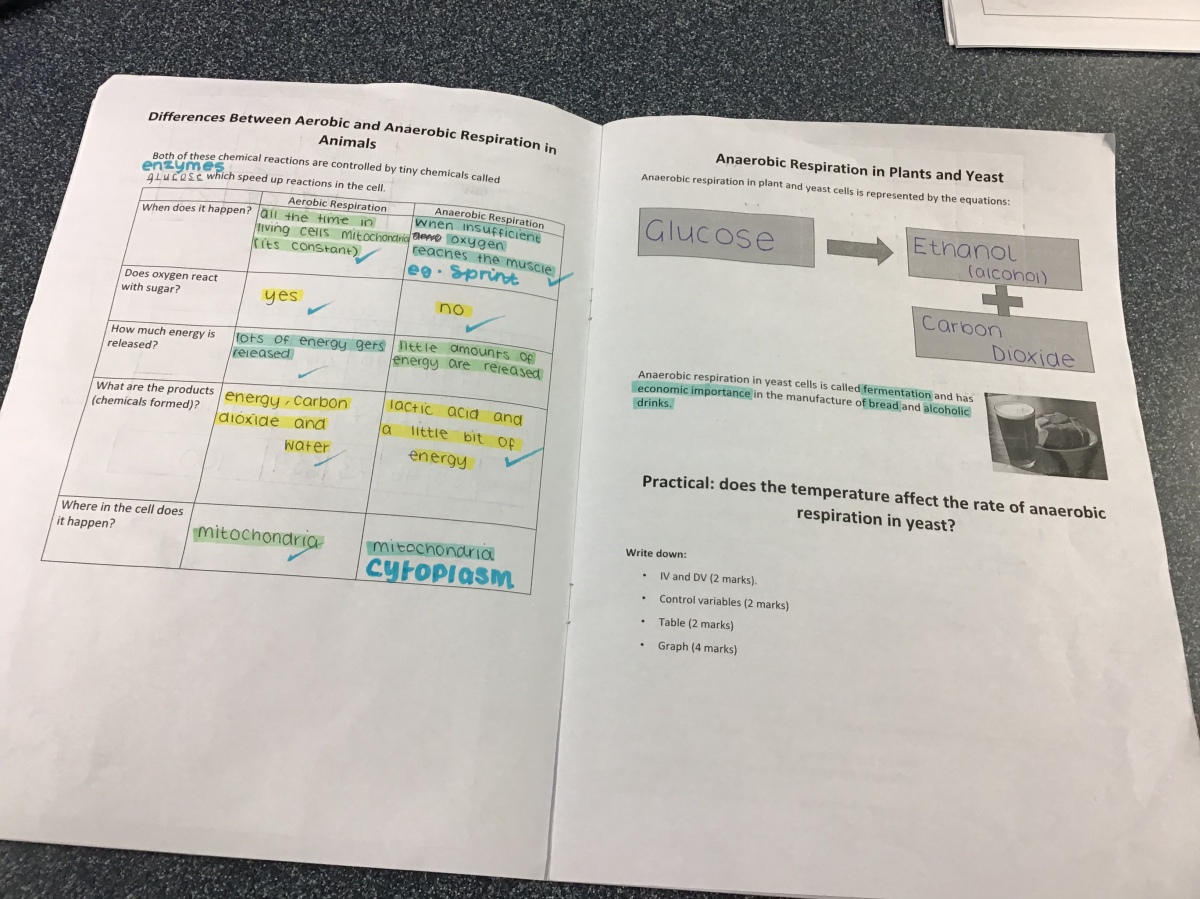
What are the downsides to booklets?
The obvious one is the expense; each booklet probably costs about 40p to produce and my Y9 have five topics in the year. Though if you balance that against the cost of an exercise book, more glue sticks and printing of homework sheets and practice questions it might well balance out. Another downside is the lack of flexibility; it means I have to pre-plan what I want to do in that topic, and if a student wants to take learning in a different direction, there isn’t room for that in the booklet. I try to leave a couple of blank pages in the back. Last week I winged a practical with Y9 about the effect of different sugars on yeast respiration which wasn’t in my booklet, but thankfully I had some blank pages in the back. The other issue I have found is if a child forgets their booklet you need a back up. I’ve taken to copying one extra booklet for them to look at (but not write in) so they can do the questions etc on paper and copy up at home. I’ve also put the booklets online for them so they could see them on their ‘phones if needed.
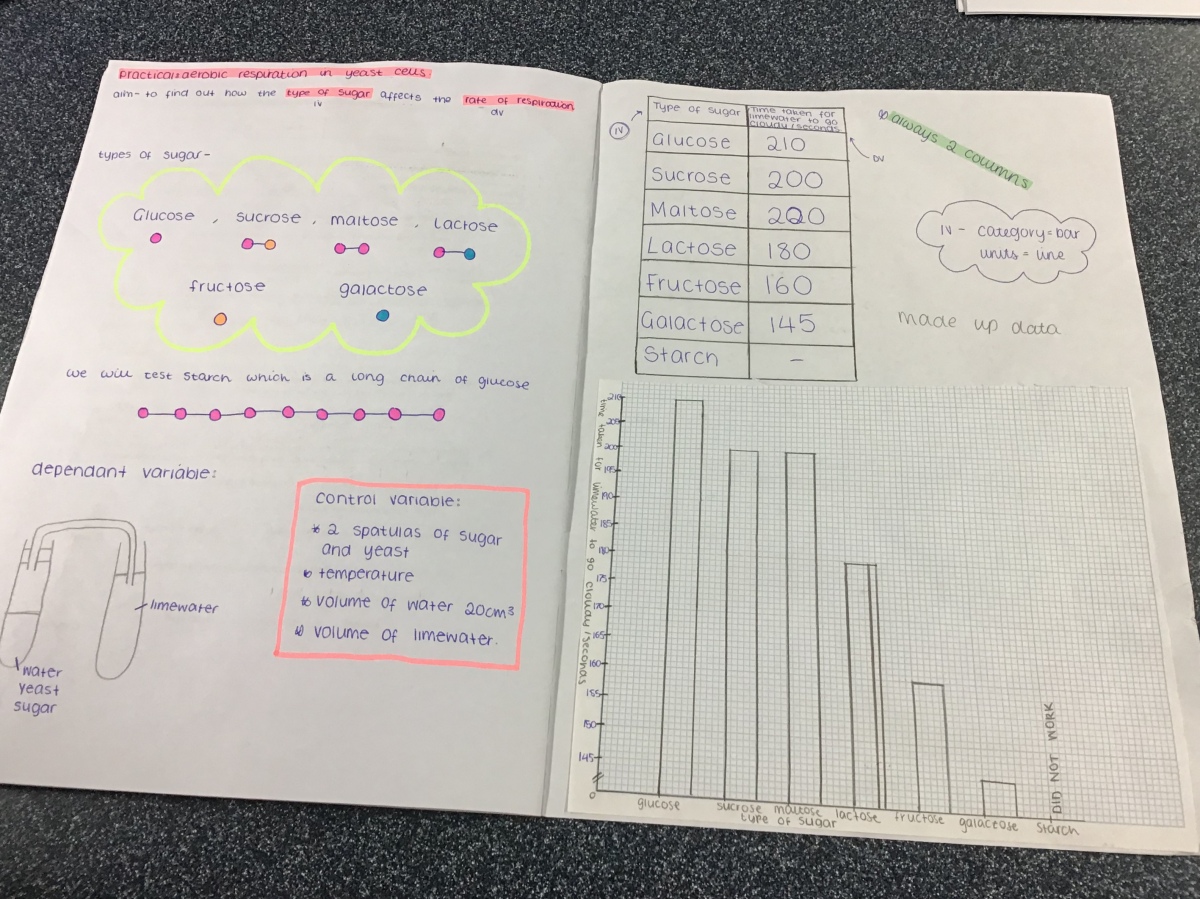
Who do I use booklets with?
Most of our department use booklets for Y8. Interestingly, we’ve all adapted the same starting point to suit our own teaching styles which I love. We’ve changed the practicals and questions and examplar materials to suit what we love to teach.
I have started to make them for Y9 due to time restrictions and it’s worked so well. I’ve used them for some Y10 and Y11 topics if they are more self-study topics. Y12 and Y13 biology students have booklets of past paper questions for homework. Y10/11 have work booklets for the required practicals (see seperate blog posts).
I’ve also made booklets for all 8 units of the GCSE Psychology course which has been fantastic, as the course is so discussion-based and I hate pausing to make notes.
Here are some examples of my booklets (school logo has been removed). These match up with the AQA GCSE Biology course. Feel free to try them out and edit them to suit your needs but DO NOT SELL THEM!!
GCSE Biology: Adaptations
~~ ADAPTATIONS STUDENT BOOKLET ~~
GCSE Biology: Respiration
Respiration Student Booklet
GCSE Biology: Environment and Feeding Relationships
Feeding Relationships Topic Year 9 Student Booklet
GCSE Biology: Humans and The Environment
Self Study Booklet Humans and the Environment
Thank you to Izzy and Katie who let me use photos of their work on here
NEW: Year 7 Science Booklets
We don’t follow the national curriculum so these booklets won’t be usable for most people as they are, but feel free to edit them to suit your own needs:
Y7 Student Booklet Space
Y7 Student Booklet Cells
Y7 Student Booklet Chemical Change
Y7 Student Booklet Classification
Y7 Student Booklet Energy Light and Sound
Y7 Student Booklet Solutions and Mixtures, Acids and Alkalis


